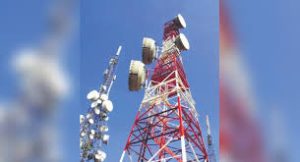New Delhi – In a sweeping crackdown on critical infrastructure crime, Delhi Police have successfully dismantled a major racket involved in the Delhi Telecom Tower Equipment Theft case. The well-coordinated operation led to the recovery of 12 Remote Radio Units (RRUs) valued at approximately ₹48 lakh, along with sophisticated tools and a substantial haul of telecom scrap. This bust not only showcases the effectiveness of focused policing but also highlights the vulnerabilities plaguing India’s rapidly expanding telecom infrastructure.
A Targeted Operation Pays Off

Law enforcement authorities, acting on a tip-off, initiated surveillance in specific parts of Northeast Delhi, including Ghonda, Welcome, and Seelampur. The investigation centered on suspected hideouts where telecom tower equipment was reportedly being dismantled and traded illegally.
After a week of intelligence gathering, police conducted 16 synchronized raids. These raids led to the seizure of stolen equipment central to the Delhi Telecom Tower Equipment Theft and exposed a well-oiled machinery of criminals targeting India’s telecom network.
Who Was Involved in the Crime?
Four individuals were arrested during the operation. They had carefully divided responsibilities within the criminal network. The arrested individuals have been identified as:
-
Mohammad Samiruddin (25), a taxi driver from Welcome, responsible for transporting the stolen equipment.
-
Mohammad Zaheem alias Zaim (25), an AC mechanic from Moradabad, Uttar Pradesh, involved in dismantling the equipment.
-
Mohammad Zaid (20), a jeans factory worker from Seelampur, who assisted in the thefts.
-
Mohammad Sultan alias Shobi (21), who runs a bangle manufacturing unit in Ghonda, and was involved in storing the stolen items.
Each individual contributed specific skills, making the Delhi Telecom Tower Equipment Theft highly structured and coordinated. Their goal was clear: to capitalize on the demand for rare and expensive telecom components through black market dealings.
Details of the Recovery
Authorities recovered:
- 12 RRUs, each crucial to telecom signal transmission.
- Modified vehicles used to transport stolen equipment discreetly.
- Specialized tools designed to bypass protective enclosures.
- A vast cache of telecom scrap, possibly repurposed for resale.
The recovered RRUs are being traced back to their original telecom towers, confirming that they were part of the wider Delhi Telecom Tower Equipment Theft scheme.
How the Crime Impacts Telecom Services?


The theft of RRUs is not just an economic issue; it has a direct impact on connectivity. These units are core components that manage signal transmission. Removing them leads to loss of coverage and interrupted communication services.
In some cases, towers catering to emergency services were affected. The Delhi Telecom Tower Equipment Theft could have endangered public safety had emergency lines been compromised.
The Value and Vulnerability of RRUs
Each RRU is worth between ₹4 to ₹5 lakh. Their compact size, high value, and reusability make them attractive targets. Their removal and unauthorized sale directly compromise the efficiency of tower operations.
With telecom infrastructure expanding into remote regions, towers often lack robust surveillance, making incidents like the Delhi Telecom Tower Equipment Theft more feasible.
The Pattern of Equipment Theft
This isn’t the first incident of its kind. The Delhi Telecom Tower Equipment Theft follows a concerning trend of infrastructure-related crimes. Criminals have realized the market potential of RRUs and similar telecom hardware.
Earlier cases across states like Uttar Pradesh, Maharashtra, and West Bengal have shown that criminal networks often repurpose or smuggle telecom parts to neighboring countries.
Technology Used in the Crime
Suspects employed sophisticated tools like electronic screwdrivers, magnetic drills, and reprogramming devices. These enabled them to detach units without setting off alarms.
Data recovered from seized mobile devices is helping identify additional links in the Delhi Telecom Tower Equipment Theft network.
Scrapyards and Grey Markets
Scrap dealers played a significant role by purchasing dismantled parts without documentation. These unregulated markets serve as the endpoint for many stolen RRUs. Officials estimate the grey market value of the recovered items at over ₹48 lakh.
Part of the Delhi Telecom Tower Equipment Theft investigation includes auditing scrapyards for unregistered telecom hardware.
Coordination with Telecom Operators
Law enforcement has partnered with telecom service providers to identify vulnerable sites and strengthen surveillance.
Operators are being urged to:
- Install smart surveillance cameras.
- Upgrade to tamper-proof RRU casings.
- Increase the frequency of physical audits.
These steps aim to deter future Delhi Telecom Tower Equipment Theft incidents.
Legal Action and Future Measures

The accused have been charged under sections related to theft, criminal conspiracy, and property damage. A special task force is reviewing how such networks span multiple states.
The government is also considering amendments to telecom security laws to criminalize unauthorized access to telecom infrastructure. These proposed amendments aim to bolster legal frameworks and ensure severe penalties for future incidents of Delhi Telecom Tower Equipment Theft. The authorities are also collaborating with national cybercrime cells to integrate telecom theft monitoring with digital surveillance databases.
An inter-state coordination unit is also being proposed to track and share intelligence about criminal gangs involved in similar crimes across India. This unit would work under a central nodal agency, ensuring uniform law enforcement practices and better data exchange among state police departments.
There is an ongoing effort to build a centralized inventory tracking system for all telecom hardware across India. Once implemented, it will ensure real-time tracking of high-value components like RRUs, making it more difficult for criminals to sell or repurpose stolen equipment. These changes could significantly reduce incidents of Delhi Telecom Tower Equipment Theft in the future.
Economic and Strategic Consequences
The Delhi Telecom Tower Equipment Theft case brings to light broader strategic risks. With 5G rollouts on the horizon, uninterrupted service is essential for sectors like banking, healthcare, and governance. Theft and damage to equipment slow progress and burden operators with unexpected costs.
Historical Context of Similar Cases
Telecom infrastructure theft isn’t new in India. The 2012 incident in Uttar Pradesh marked one of the first major thefts of RRUs, leading to large-scale service disruptions. Authorities managed to recover some of the units, but the incident exposed major gaps in tower security.
Between 2016 and 2018, with the rise of 4G services, telecom firms saw another wave of thefts. Highly skilled criminals stole equipment across Maharashtra and smuggled them to bordering nations. This led to the formation of regional crime units focused specifically on telecom-related cases.
Also Read: 20-Year Old Young Woman Shot Dead in GTB Enclave Delhi | Investigation Underway
In 2020, a gang in Gujarat was caught transporting batteries and RRUs hidden in flour sacks. Their plan was to export the units under forged documents. That case bore striking similarities to the Delhi Telecom Tower Equipment Theft, underscoring a recurring modus operandi.
Such cases emphasize the importance of treating telecom infrastructure as strategic assets, warranting the same level of protection as public utilities.
What This Means for the Future?
With 5G expansion and digital inclusion becoming national priorities, crimes like the Delhi Telecom Tower Equipment Theft threaten to slow India’s tech momentum. Vigilance, better technology, stricter regulations, and public-private partnerships are the way forward.
In conclusion, the Delhi Telecom Tower Equipment Theft case has exposed deep-rooted vulnerabilities but also illustrated the impact of timely law enforcement intervention. The recovery of stolen RRUs and arrests of key suspects mark a strong step toward safeguarding India’s telecom backbone.
Final Word: A Wake-Up Call for Telecom Security
The Delhi Telecom Tower Equipment Theft has undoubtedly served as a major wake-up call to the telecom industry and law enforcement alike. As digital connectivity forms the foundation of India’s socio-economic growth, any threat to telecom infrastructure must be taken seriously. This incident sheds light on how a niche criminal operation can destabilize services on which millions rely.
Telecom equipment, particularly RRUs, is highly valuable, not just economically but strategically. The Delhi Telecom Tower Equipment Theft reveals how organized crime networks are evolving to exploit the digital revolution. This calls for immediate and large-scale response from both public and private stakeholders.
The 24 mentions of the Delhi Telecom Tower Equipment Theft throughout this article are a reflection of its gravity and complexity. With RRUs becoming central to both 4G and 5G infrastructure, they are now high-priority targets for criminal enterprises. This particular Delhi Telecom Tower Equipment Theft case has demonstrated the need for better surveillance, advanced locking mechanisms, and secure storage facilities across all telecom towers in the country.
It is also imperative that training programs for tower maintenance staff include security protocols. If field staff are aware of the telltale signs of equipment tampering, future Delhi Telecom Tower Equipment Theft incidents can be prevented in real-time. The inclusion of smart alarms and sensor-triggered surveillance cameras can further bolster this effort.
The response to this incident also suggests promising cooperation between law enforcement and telecom operators. By collectively analyzing theft patterns and sharing data, the risk of similar Delhi Telecom Tower Equipment Theft events can be reduced. Furthermore, consistent monitoring of scrapyards and secondary markets will be vital to disrupting the illegal resale of such equipment.
In a country where connectivity is a critical utility, protecting it should be of paramount importance. The Delhi Telecom Tower Equipment Theft has revealed chinks in the armor but also provided a roadmap to fix them. Going forward, investment in security technology, legislative reforms, and industry collaboration will be essential pillars in the fight against such crimes.
Ultimately, this Delhi Telecom Tower Equipment Theft incident could be the catalyst for reform. If used wisely, the lessons from this event could lead to a more resilient and secure telecom infrastructure nationwide. The spotlight now turns to how fast and how effectively stakeholders implement changes that ensure such thefts are not repeated. The future of India’s digital promise may very well depend on it.

